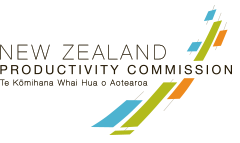In its final report, both Commissions concluded that CER initiatives have benefited both countries over the past 30 years. Trade restrictions have been greatly reduced on goods traded between the two countries; people move freely ‘across the ditch’; and the CER agenda has expanded into new areas ‘behind the border’. However, there are further opportunities to strengthen the bilateral economic relationship, particularly in relation to services trade and investment.
In addition to proposing further liberalisation of trade in goods and services, and capital flows, the report addressed some of the complex issues associated with the free movement of people between the two countries. There was also significant potential for each government to cooperate with and learn from the other in policy development and evaluation.
The two Commissions also identified some enhancements to CER governance arrangements to help meet the challenges of the future, building on the informality and flexibility which have served the relationship well.
Key points:
- The Australian and New Zealand economies have become closely integrated, beyond what could be expected with any third country. This has been facilitated by institutional, legal and cultural similarities, as well as geographic proximity.
- Closer Economic Relations (CER) initiatives have contributed significantly to trans–Tasman integration over the past 30 years. Tariffs and quantitative restrictions have been eliminated on virtually all goods traded between the two countries; people move freely across the Tasman; and the CER agenda has expanded into new areas, such as services trade and behind-the-border regulatory barriers.
- The Commissions’ assessment is that CER has produced benefits overall for Australia and New Zealand, even though evidence is limited in some areas.
- Barriers to further integration remain and new issues will emerge. Addressing them is becoming more challenging, as the focus shifts to more complex areas, including the regulation of services.
- To ensure that integration policies make the biggest contribution to both economies, future CER initiatives should continue to: be outward looking; take account of linkages with other agreements; and complement domestic policy improvement.
- A ‘direction of travel’ towards a single economic market has been characterised by Prime Ministers in terms of a seamless market in which people and businesses can have a ‘domestic-like’ experience in either country. How far Australia and New Zealand go in this direction should emerge from good public policy processes focused on the achievement of net benefits.
- This scoping study identifies more than 30 initiatives to promote beneficial integration. Most address regulatory barriers to services trade and commercial presence, and some remaining impediments to integration in goods, capital and labour markets.
- Some of these initiatives will require more detailed consideration.
- There is further potential for each government to cooperate with and learn from the other in policy development, service delivery and regulatory approaches.
- Current governance approaches for CER are informal and flexible, and appear reasonably effective. This scoping study identifies some opportunities for improvement.

